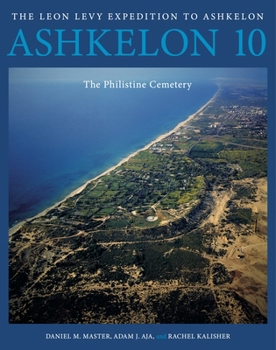Ashkelon 10: The Philistine Cemetery
From 2013 to 2016, the Leon Levy Expedition to Ashkelon excavated an Iron Age cemetery located immediately outside the rampart of the ancient city. This cemetery dates from the period when Ashkelon was a Philistine city, and it is the first one excavated at any of the core Philistines cities. The Philistines are known today mainly as they are portrayed in sources written by others, such as the Hebrew Bible, in stories told by their enemies. In Ashkelon 10, the Philistine story is retold using archaeological evidence. As such, the Philistine cemetery is not only an important reference for the history of the Philistines but a critical piece for understanding the broader puzzle of death and burial in the southern Levant in the first millennium b.c.
The excavation of the Philistine cemetery produced not only human remains but a wealth of objects, including pottery, jewelry, metals, and personal seals. In this volume, the material culture is addressed by scholars who frame their work within the larger world of southern Levantine cultural patterns.
In the process of excavating the area of the Philistine cemetery, an examination of the broader landscape in this part of Ashkelon led to the discovery of a Roman vineyard covering the Iron Age remains. This is one of the few vineyards excavated in the region, and the findings are also presented in this volume.
This five-hundred-page volume features hundreds of full-color illustrations and includes a catalog of 141 separate burial events. It represents an important contribution to the study of the peoples of the eastern Mediterranean in the first millennium b.c.





